Do you trade breakouts?
Have you learned a breakout trading strategy before?
Then you know breakout trading can be exciting.
The price quickly moves in your favor and make it seems like you’re printing money.
However…
Breakout trading can also be painful.
For example:
You notice the price breaking above Resistance.
The candles are big and bullish, so you go long.
But suddenly, the price does a 180-degree reversal.
And before you know it, you bought the highs and now you’re bleeding in the red.
Ouch.
So now you’re probably wondering:
“How do I filter for high probability breakout trades and know which are the ones to avoid?”
Well, that’s what you’ll discover in today’s post.
Or if you prefer, you can watch this training below on how to trade breakouts…
https://www.youtube.com/watch?v=3hcrDDqRnq4
Breakout Trading: What is it and how does it work?
So…
What is breakout in trading?
A breakout occurs when the price moves beyond a certain level.
So, breakout trading is entering trades when momentum is in your favor.
Here’s what I mean:
Now…
Breakout trading guarantees you catch every trend in the market — that’s why it’s widely used by Trend Followers, CTAs, and even Market Wizards.
I don’t buy stocks on a scale down; I buy on a scale up. — Jesse Livermore
Whatever method you use to enter trades, the most critical thing is that if there is a major trend, your approach should assure that you get in that trend. — Richard Dennis
If I were buying, my point would be above the market. I try to identify a point at which I expect the market momentum to be strong in the direction of the trade. — Ed Seykota
However, nothing is perfect when it comes to trading breakouts.
And breakout trading has its pros and cons to it.
I’ll explain…
Pros:
- You’ll catch every trend in the market
- Momentum is in your favor
Cons:
- It could be a false breakout
- It can be psychologically difficult to enter the trade
I know…
Getting “caught” in false breakouts suck.
You feel like an idiot buying the highs only to watch the market do a sudden reversal.
That’s why in the next section, you’ll learn a breakout strategy on how to identify high-probability breakout trades — and avoid the ones likely to fail.
Read on…
The WRONG way to trade breakout — you must avoid at all cost
I know.
It can be exciting to trade breakouts.
The price is moving fast, the candles are bullish, and momentum is in your favor.
However…
When it feels “right” to buy a breakout, it’s usually the worst thing you can do.
Why?
Because in the short-term, the buying pressure is exhausted and have no more “energy” to push the price higher.
So what happens?
The “smart money” starts to take profit.
Then, bearish traders will look to short the markets.
Slowly, the market starts to reverse…
At this point, traders who bought the highs are sitting in the red.
And when they can’t take the pain any longer, they cut their losses.
The result?
Increased selling pressure which causes the market to reverse lower.
So here’s the lesson:
Whenever the market looks very bullish — it’s usually too late to enter the trade.
My favorite way to trade breakouts (with low risk and huge returns)
So…
You’ve learned how NOT to trade a breakout.
Now, you’re probably wondering:
“So how should I trade breakouts?”
“What’s the best breakout strategy?
Well, my secret is this…
You want to trade breakouts — with buildup.
What’s a buildup?
I’ll explain…
A buildup is a tight consolidation and you’ll notice the range of the candles get smaller.
Here’s what I mean…
Now, a buildup is powerful for 2 reasons when it comes to how to trade breakouts…
1. You increase your profit potential and lower your risk
Earlier:
You saw that if you trade breakouts without a buildup, it’s likely to fail.
But that’s not all.
Because where do you put your stop loss on this breakout strategy??
If you’re like most traders, you’ll put it below Support.
And given the distance of your stop loss, you must reduce your position size (so you can maintain your risk).
This means the market needs to move a lot just for you to earn 1R (which is your risk per trade).
An example…
If you have a stop loss of 1000 pips, the market needs to move 1000 pips in your favor so you can earn 1R.
Now…
If you have a tighter stop loss, you can increase your position size (while maintaining your risk).
This means the market needs to only move a little for you to earn 1R.
An example:
If you have a stop loss of 100 pips, the market needs to move 100 pips in your favor so you can earn 1R.
Can you see how powerful this?
If you want to learn more, go watch this training video below…
https://www.youtube.com/watch?v=v-Cz_LUsq2g&t=4s
2. You improve your winning rate
Imagine:
The price is at Resistance.
You know this is an area where the price could reverse lower.
But it didn’t.
Instead what you get is a buildup at Resistance.
So, what does it tell you?
Perhaps there’s no selling pressure.
Or, there’s strong buying pressure supporting the higher prices.
Whatever the case is, this is a sign of strength.
Here’s an example of a buildup to how to trade breakouts:
But don’t forget…
When the price breaks above Resistance, traders who are short will cut their losses.
Plus, momentum traders will hop on board and buy the breakout.
All these factors increase the buying pressure — and the market is likely to breakout higher.
Does it make sense?
Great!
Then let’s move on…
Breakout Trading: When do you buy breakouts?
So…
The buildup is a core concept whenever I trade a breakout trading strategy.
However, there are variations of it.
For example:
When you see higher lows into Resistance, is this a sign of strength or weakness?
Take some time to think about it…
…
…
…
Now, similar to the buildup concept I shared earlier.
When you see higher lows into Resistance, it tells you:
- There’s no selling pressure
- There’s strong buying pressure supporting the higher prices
- Buy stop orders are clustered above Resistance
Clearly, this is a sign of strength.
Here’s how it looks like:
Now you might be familiar with this chart pattern, and it’s called an Ascending Triangle.
So if you spot such a pattern, it means the market could breakout higher.
If you want to learn how to trade this chart pattern, go check out The Ascending Triangle Trading Strategy Guide.
Next…
Breakout Trading: When do you short breakdowns?
This is the inverse of what you’ve learned earlier.
Whenever you see lower highs into Support, it tells you:
- There’s no buying pressure
- There’s strong selling pressure pushing the price lower
- Sell stop orders are clustered below Support
Clearly, this is a sign of weakness.
Here’s how it looks like:
Now you might be familiar with this chart pattern, and it’s called a Descending Triangle.
So if you spot such a pattern, it means the market could breakdown lower.
Now…
You’ve learned when to buy breakouts and short breakdowns.
Moving on, you’ll learn how to identify explosive breakout trades about to occur.
Are you excited?
Then read on…
How to identify explosive breakout trades about to occur
Here’s the thing:
The market is always changing.
It moves from a range to trend (and vice versa).
And the longer a market stays in a range, the harder it breaks.
Here’s an example:
But why?
Because the longer the market is in a range, more orders are placed in the market.
Let me explain…
Bullish traders will put buy stop orders above Resistance (hoping to catch breakouts).
Bearish traders would short the market and have their stop loss (also a buy stop order) above Resistance.
As time passes…
You’ll get an overwhelming amount of buy stop orders above Resistance.
So, when the market breaks out, it’ll trigger these clusters of buy stop orders which fuel strong buying pressure.
So…
If you want to identify explosive breakout trades above to occur, pay close attention when the market is in a range for a long time.
Because the longer it range, the harder it breaks.
Breakout Trading Strategy: The Trend Trading Breakout
Here’s the deal:
In a strong trend, the price tends to stay above the 20-period Moving Average.
So if you’re waiting for a pullback, then you’ll be disappointed as the market continues making new highs — without you.
Here’s what I mean:
Now…
There’s a time for trading pullbacks, but not when the market is in a strong trend.
Instead, you want to trade breakouts.
That’s why I call this breakout trading strategy… The Trend Trading Breakout.
Here’s how it works:
- The market is in a strong uptrend (respecting the 20MA)
- Buy breakouts above the swing high
- Set your stop loss 1 ATR below the swing low
- Exit the trade if the price closes below 20MA
An example…
Winning trade on (EUR/USD):
Winning trade on (NI255):
Losing trade on (XAG/USD):
So here’s the takeaway…
In a strong trend, you want to buy breakouts (or short breakdowns) because the market is unlikely to offer a pullback.
Conclusion
So here’s what you’ve learned today:
- Don’t buy breakouts after a strong bullish momentum because that’s when the market is about to reverse
- You want to buy breakouts with a buildup
- Higher lows into Resistance is a sign of strength
- Lower highs into Support is a sign of weakness
- The longer the market is in a range, the stronger the breakout
- A Trend Trading Breakout strategy that works
Now here’s a question for you…
How do you trade breakouts?
Leave a comment below and share your thoughts with me.
Breakout Trading: What is it and how does it work?
A breakout occurs when the price moves beyond a certain level.
So, breakout trading is entering trades when momentum is in your favor.
Here’s what I mean:
Now…
Breakout trading guarantees you catch every trend in the market — that’s why it’s widely used by Trend Followers, CTAs, and even Market Wizards.
I don’t buy stocks on a scale down; I buy on a scale up. — Jesse Livermore
Whatever method you use to enter trades, the most critical thing is that if there is a major trend, your approach should assure that you get in that trend. — Richard Dennis
If I were buying, my point would be above the market. I try to identify a point at which I expect the market momentum to be strong in the direction of the trade. — Ed Seykota
However, nothing is perfect.
And breakout trading has its pros and cons to it.
I’ll explain…
Pros:
- You’ll catch every trend in the market
- Momentum is in your favor
Cons:
- It could be a false breakout
- It can be psychologically difficult to enter the trade
I know…
Getting “caught” in a false breakout sucks.
You feel like an idiot buying the highs only to watch the market do a sudden reversal.
That’s why in the next section, you’ll learn how to identify high probability breakout trades — and avoid the ones likely to fail.
Read on…
The WRONG way to trade breakout — you must avoid at all cost
I know.
It can be exciting to trade breakouts.
The price is moving fast, the candles are bullish, and momentum is in your favor.
However…
When it feels “right” to buy a breakout, it’s usually the worst thing you can do.
Why?
Because in the short-term, the buying pressure is exhausted and have no more “energy” to push the price higher.
So what happens?
The “smart money” starts to take profit.
Then, bearish traders will look to short the markets.
Slowly, the market starts to reverse…
At this point, traders who bought the highs are sitting in the red.
And when they can’t take the pain any longer, they cut their losses.
The result?
Increased selling pressure which causes the market to reverse lower.
So here’s the lesson:
Whenever the market looks very bullish — it’s usually too late to enter the trade.
My favorite way to trade breakouts (with low risk and huge returns)
So…
You’ve learned how NOT to trade a breakout.
Now, you’re probably wondering:
“So how should I trade breakouts?”
Well, my secret is this…
You want to trade breakouts — with buildup.
What’s a buildup?
I’ll explain…
A buildup is a tight consolidation and you’ll notice the range of the candles get smaller.
Here’s what I mean…
Now, a buildup is powerful for 2 reasons…
1. You increase your profit potential and lower your risk
Earlier:
You saw that if you trade breakouts without a buildup, it’s likely to fail.
But that’s not all.
Because where do you put your stop loss?
If you’re like most traders, you’ll put it below Support.
And given the distance of your stop loss, you must reduce your position size (so you can maintain your risk).
This means the market needs to move a lot just for you to earn 1R (which is your risk per trade).
An example…
If you have a stop loss of 1000 pips, the market needs to move 1000 pips in your favor so you can earn 1R.
Now…
If you have a tighter stop loss, you can increase your position size (while maintaining your risk).
This means the market needs to only move a little for you to earn 1R.
An example:
If you have a stop loss of 100 pips, the market needs to move 100 pips in your favor so you can earn 1R.
Can you see how powerful this?
If you want to learn more, go watch this training video below…
https://www.youtube.com/watch?v=v-Cz_LUsq2g&t=4s
2. You improve your winning rate
Imagine:
The price is at Resistance.
You know this is an area where the price could reverse lower.
But it didn’t.
Instead what you get is a buildup at Resistance.
So, what does it tell you?
Perhaps there’s no selling pressure.
Or, there’s strong buying pressure supporting the higher prices.
Whatever the case is, this is a sign of strength.
Here’s an example:
But don’t forget…
When the price breaks above Resistance, traders who are short will cut their losses.
Plus, momentum traders will hop on board and buy the breakout.
All these factors increase the buying pressure — and the market is likely to breakout higher.
Does it make sense?
Great!
Then let’s move on…
Breakout Trading: When do you buy breakouts?
So…
The buildup is a core concept whenever I trade breakouts.
However, there are variations of it.
For example:
When you see higher lows into Resistance, is this a sign of strength or weakness?
Take some time to think about it…
…
…
…
Now, similar to the buildup concept I shared earlier.
When you see higher lows into Resistance, it tells you:
- There’s no selling pressure
- There’s strong buying pressure supporting the higher prices
- Buy stop orders are clustered above Resistance
Clearly, this is a sign of strength.
Here’s how it looks like:
Now you might be familiar with this chart pattern, and it’s called an Ascending Triangle.
So if you spot such a pattern, it means the market could breakout higher.
If you want to learn how to trade this chart pattern, go check out The Ascending Triangle Trading Strategy Guide.
Next…
Breakout Trading: When do you short breakdowns?
This is the inverse of what you’ve learned earlier.
Whenever you see lower highs into Support, it tells you:
- There’s no buying pressure
- There’s strong selling pressure pushing the price lower
- Sell stop orders are clustered below Support
Clearly, this is a sign of weakness.
Here’s how it looks like:
Now you might be familiar with this chart pattern, and it’s called a Descending Triangle.
So if you spot such a pattern, it means the market could breakdown lower.
Now…
You’ve learned when to buy breakouts and short breakdowns.
Moving on, you’ll learn how to identify explosive breakout trades about to occur.
Are you excited?
Then read on…
How to identify explosive breakout trades about to occur
Here’s the thing:
The market is always changing.
It moves from a range to trend (and vice versa).
And the longer a market stays in a range, the harder it breaks.
Here’s an example:
But why?
Because the longer the market is in a range, more orders are placed in the market.
Let me explain…
Bullish traders will put buy stop orders above Resistance (hoping to catch breakouts).
Bearish traders would short the market and have their stop loss (also a buy stop order) above Resistance.
As time passes…
You’ll get an overwhelming amount of buy stop orders above Resistance.
So, when the market breaks out, it’ll trigger these clusters of buy stop orders which fuel strong buying pressure.
So…
If you want to identify explosive breakout trades above to occur, pay close attention when the market is in a range for a long time.
Because the longer it range, the harder it breaks.
Breakout Trading Strategy: The Trend Trading Breakout
Here’s the deal:
In a strong trend, the price tends to stay above the 20-period Moving Average.
So if you’re waiting for a pullback, then you’ll be disappointed as the market continues making new highs — without you.
Here’s what I mean:
Now…
There’s a time for trading pullbacks, but not when the market is in a strong trend.
Instead, you want to trade breakouts.
That’s why I call this breakout trading strategy… The Trend Trading Breakout.
Here’s how it works:
- The market is in a strong uptrend (respecting the 20MA)
- Buy breakouts above the swing high
- Set your stop loss 1 ATR below the swing low
- Exit the trade if the price closes below 20MA
An example…
Winning trade on (EUR/USD):
Winning trade on (NI255):
Losing trade on (XAG/USD):
So here’s the takeaway…
In a strong trend, you want to buy breakouts (or short breakdowns) because the market is unlikely to offer a pullback.
Conclusion
So here’s what you’ve learned today:
- Don’t buy breakouts after a strong bullish momentum because that’s when the market is about to reverse
- You want to buy breakouts with a buildup
- Higher lows into Resistance is a sign of strength
- Lower highs into Support is a sign of weakness
- The longer the market is in a range, the stronger the breakout
- A Trend Trading Breakout strategy that works
Now here’s a question for you…
How do you trade breakouts?
Leave a comment below and share your thoughts with me.



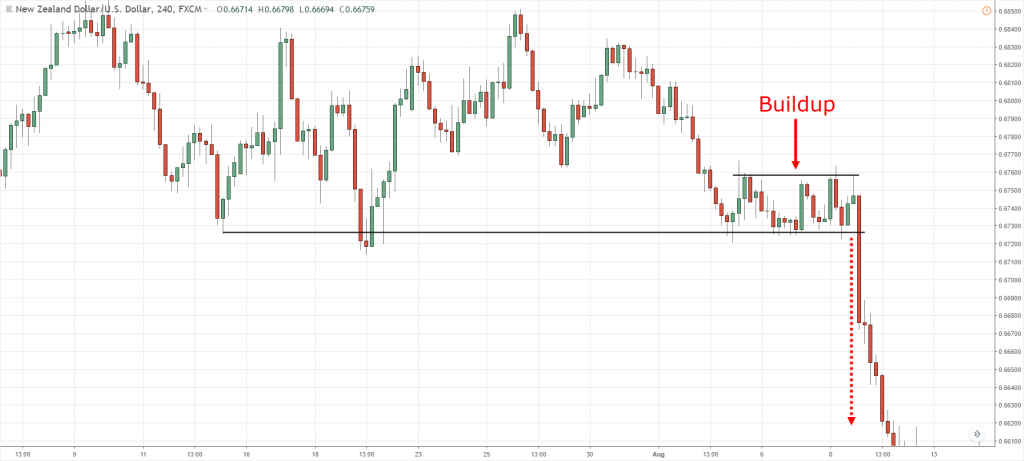
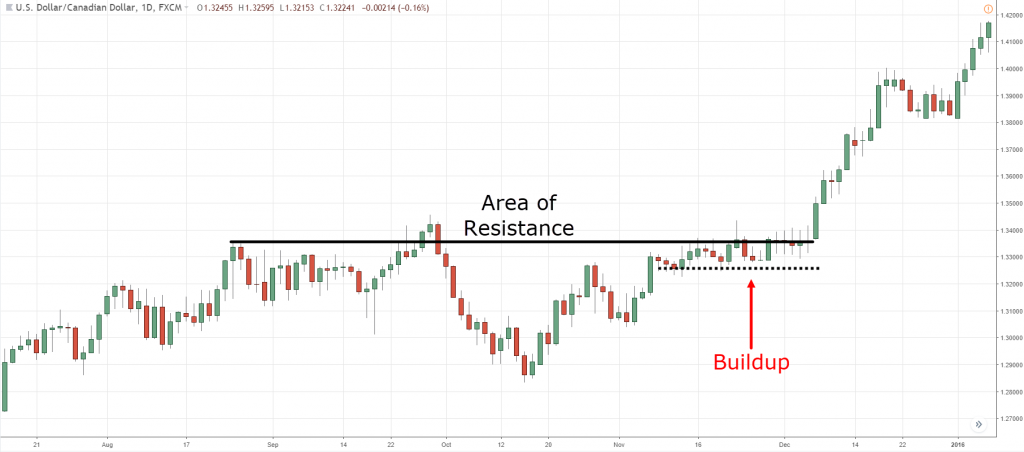
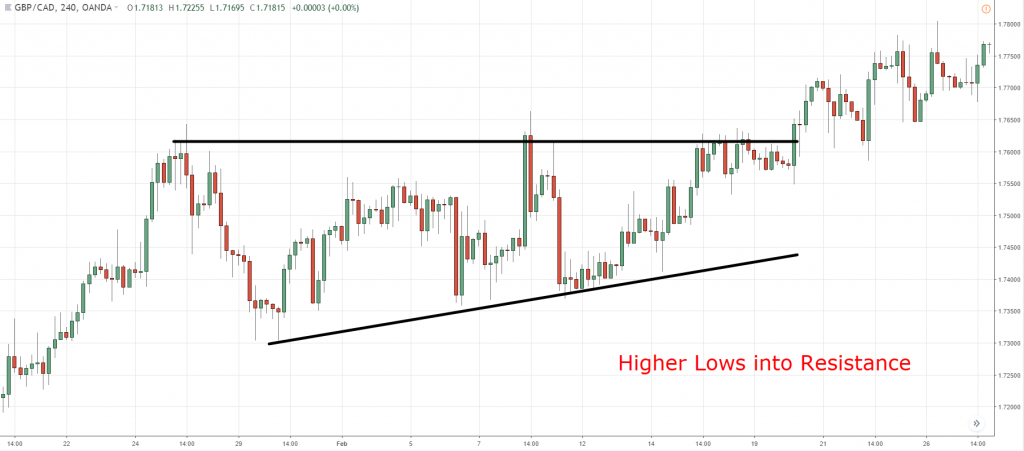
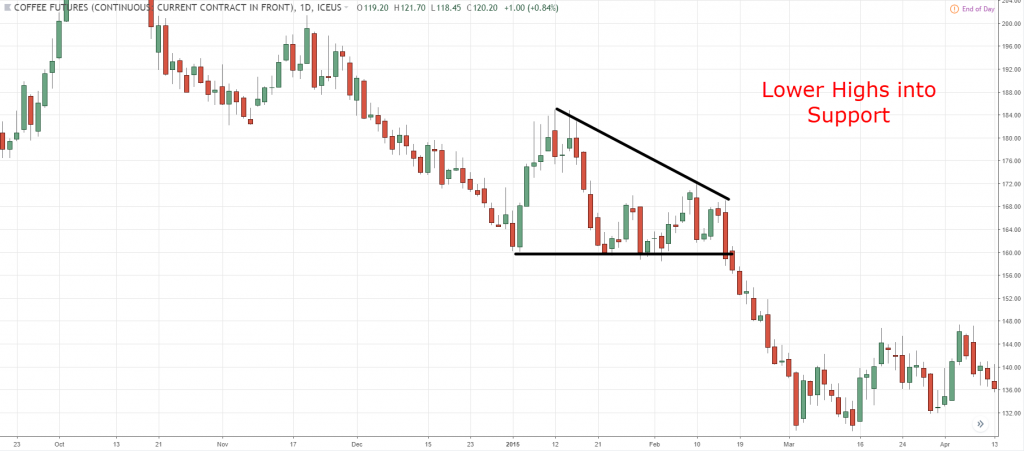
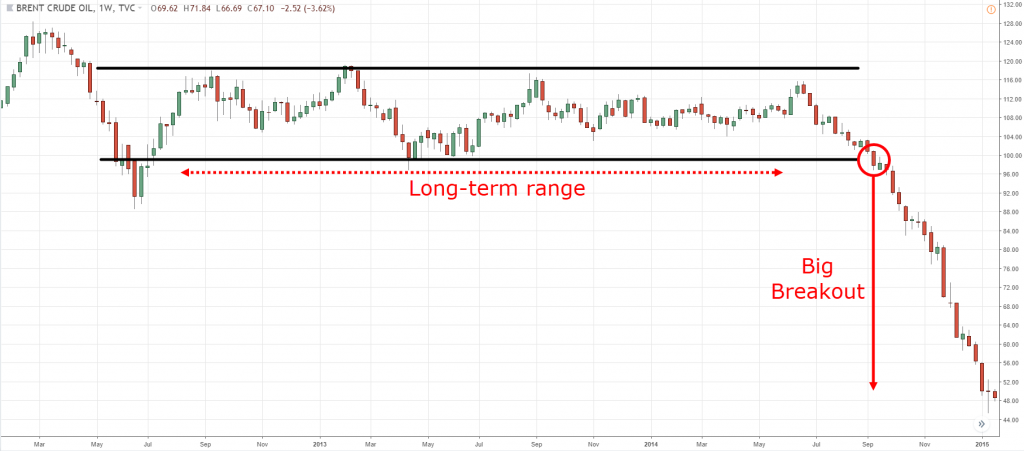
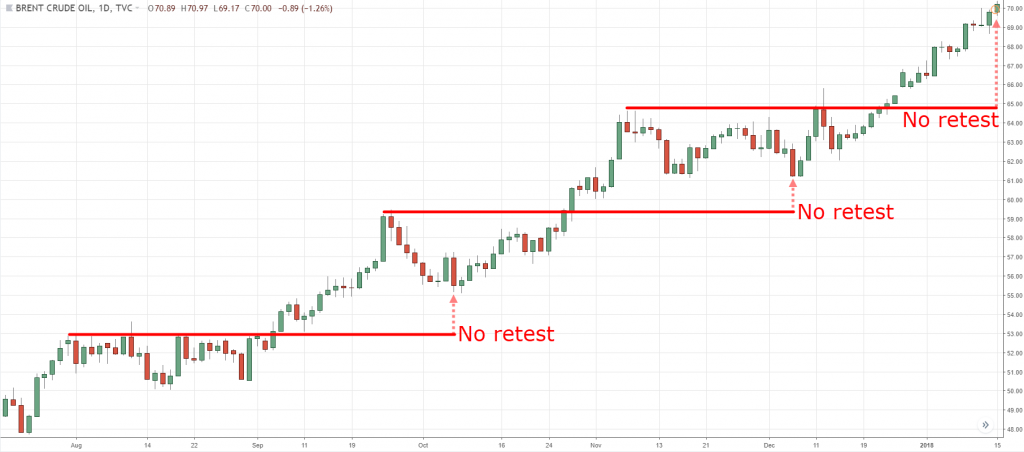
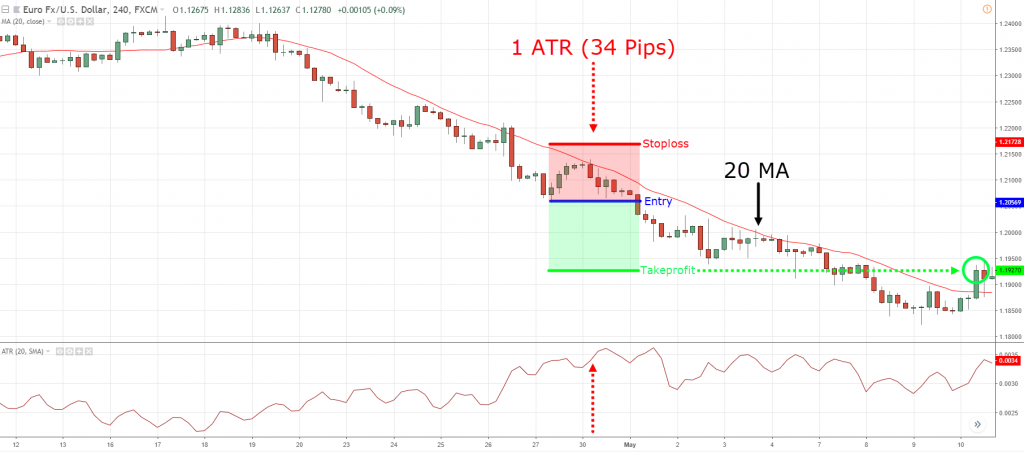
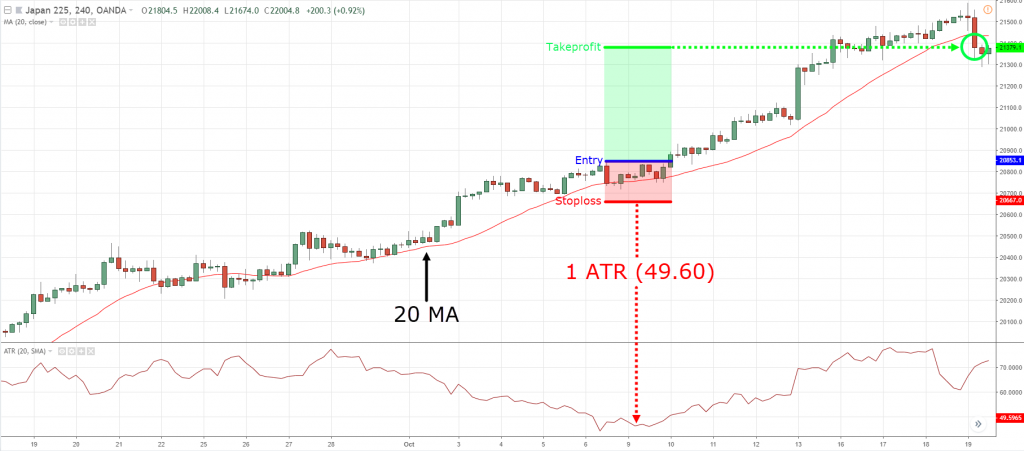
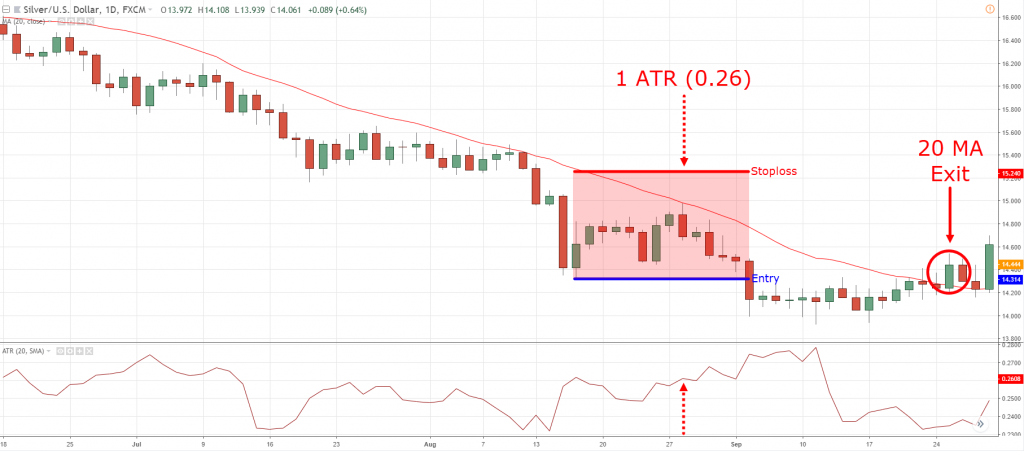
Hi
That was an eye opening for me easy to understand and straight to the point I really appreciate the lessons keep up the good work.
My pleasure!
It was great discussion very useful.
Hi Rayner, was waiting for these and learnt about breakout trading,Thanks for posting these video and also post some more simple technique to trade breakout.God bless you and keep up the good work friend.
You’re welcome!
Hi Rayner! A masterpiece!
Somehow I seem to attract always the false breakouts!
This was eye opening and very helpful!
Thank you so much!
Awesome to hear that, Spiros!
Superb write-up as usual. Great clarity. Thank you Rayner.
I appreciate it.
Hi Rayner,
Please let me have clear idea if in a strong trend, the price tends to stay below the 20-period Moving Average, then it is called strong down trend, right? then we may trade for put/buy, right?
Yes, it’s a strong downtrend but it doesn’t mean you sell immediately.
You want to have a valid trading setup first.
Can it be applied to trading London break out on a daily basis?
I’ve not traded the London break so I can’t comment on it.
Thanks a lot for a precious sharing rayner!
You’re welcome, Nash!
Hi Rayner
I have a question if you buy after a run up in PA or sell after a drop in PA wouldn’t you be buying high and selling low? You showed your entry’s however there was no explanation as to WHY you took them where you did, can you clarify why you took those entries where you did and also how you determined your PM. What in your rule based trading plan told you to take action?
TIA
Stocktradingblogger
StockTradingBlogger.com
I’d usually buy a breakout after a buildup has been formed. The tight consolidation allows me to have a place to set my stops.
Generally speaking do you buy de breakout before it occurs?
If I get a valid setup, like a false break on the lower timeframe.
Hi Rayner thanks for all you do you do a brilliant job have a wonderful Christmas and a prosperous new year to you and your family
Thank you, Barry. And same to you!
Very good. Thank you
Cheers
Really helpful
Cheers
This is beautiful, I can see it working before I could start practicing it
I’m glad to be of help!
Hey Rayner, for you 20MA is strong trend definition.but Its not like universally accepted tend definition.so It.might be that , in uptrend(20 MA up) ,during retrace it go below 20 MA (say go to MA30, take support),but as per your methodology,we get out of the trade), and after that stocks may continue going up.how do you tackle that?
The reason why i ask is that markets are never so neat.some times price respect 20 MA, but most of the times it will not.
I’m using the 20MA as a guideline.
The key takeaway is the concept behind it.
Wow this article is awesome it has help improve my trading skills thanks very much and keep the good work bro, see you on the other side thanks.
Awesome to hear that!
Hey Rayner Teo this was great may the prominent rule of life the more you give the more you receive apply to you. you are really generous in sharing knowledge. THANKS MUCH.
I’m glad to be of help!
This is the set-up that gives me more and faster profit. Thanks for sharing for others to know this strategy.
You’re welcome!
Hi,
Thats very crucial and detailed info provided by you and certainly speaks about your Minute observations with experience ,
just to know where to place targets
One of the most common approaches is to target at the previous swing high/low, just before opposing pressure steps in.
Keep up the good work Rayner!
I will, Frans!
Thanks for so much valuable lessons sir!!
My pleasure!
Thanks for making good video s.pl explain with real trade example.
Excellent information as per usual!!!Learned so much from this tutorial!! Thanx Ryner.You are so brilliant!!!
Glad to be of help!
Hello Reyner. Kindly I need some guidance.
Is LegacyFX a good forex broker? Are they duely regulated?
I saw their offers are look good but am not sure if its real or not.
1. offers forex mentorship.
2. they give to each client an expert trading adviser.
3. They give daily signals to clients especially the beginner to help them build their accounts as they learn.
All this is done only by opening a $250 account with them.
Is this deal realistic or its just another scam?
Kindly advice.
Hi Rayner,
Your way of presentation is wonderful,It’s easy to understand and applicable in trading, I am connected to you on YouTube last month, since than i have watched many video on your channel.All are very informative. God bless you and keep it up.
Awesome to hear that, cheers!
Hi Rayner
Thanks for these opportunities given to us. Am really enjoy your presentation both on YouTube and Web, may God Almighty continues enrich your wisdom.
You’re most welcome!
Thanks sir , good trading idias for me and best of luck, trend break stredgy is fine idias.
Cheers Suresh
It is very useful knowledge shared by you. you doing very good stock market education job I really thank to you. I got from you very good share market knowledge
My pleasure!
Hey Reyner this is really informative. i have appreciated the lessons.
Hey Regina,
Thank you!
I want to be Breakout Trader so this is good for me Always wonderful presentation Thank you Rayner
Hey there,
I’m glad to hear that!
hi, i’m sorry for a silly question, but how in the chart above Winning trade on (EUR/USD) is possible to take a profit on down trend if entry point is higher than exit point. basically it is bought for higher price than sold..
Hi Rayner thanks alot for this lesson on breakour trading. Now I can confidently trade the market and profit from breakout trading.
Hey Uche,
I’m glad to hear that!
I will truly never fine someone like you in this world man,thnx alot for what yoy do for people like us that can not affort the other peoples courses
Hey Ali,
You are most welcome!
Cheers.
Masterpiece my mentor
Hey there,
It’s my pleasure!
Great video Rayner. One question are you looking at Daily Candles or weekly?
Hi Santosh,
Look at the Weekly, Daily, H4 timeframes.
Awesome and simple to understand ..
Hi Narasimhan,
You are most welcome!
Thank you so much I understand right now a lot of things I have 7 months i start to leaning to trading
Hi Manuel,
I’m glad to hear that!
Tranding pullback and Breakout two excellant guide, man
Great teach.
hey rayner,
what does it mean when price breaks out resistance and starts consolidating above resistance making support for it ?
it really confuse me, plz reply…
Hi Soham,
Use your pending order and wait for the break out after build-up.
Cheers.
I really appreciate your sharing and I haven been profitable during the time. Can you please share how to screen out the stock with consolidation on free scanner like Finviz? Thank you so much.
Great article on breakouts! Even my 10 yr old daughter could understand it so well!! Thanks so much and Keep up the great work!! You are a really good teacher!!
Wow, interesting, Navin!
Is this technique applicable to lower time frame?
Hey Steven,
You can use your lower timeframe for entry.
Breakout is more pronounced on a higher-timeframe.
Rayner’s teaching is based on a Higher Timeframe Structure.
Cheers.
Hey Rayner,
I can’t remember which article but you spoke about the last line of defense. Do you have an article which covers the concept of last line of defense. Or can you in your reply to this, objectively define what the last line of defense is?
Also, can I buy your book on “Price Action Trading Secret” withing getting the hard copy. I just want the PDF copy. Can you send me the link to buy just the soft copy.
Hey Micheal,
Please write to support.
support@tradingwithrayner.com
wow,,Nice one,, I would sell breakouts when i see price consolidate on support with higher lows and buy breakouts when price is on resistance showing higher lows….
Thank you for the great explanation as always. Wonderful article with clear and crisp examples.
You are welcome, Kiran!
Impressive content and concepts ,well explained .
Thank you, Prashant!
Hi
I do trades on Equities, so how should i find the buildups in a market. is NR7 a good scanner to identify trades.
Hi, rayne God bless you and I’m so excited you to be my mentor
You are welcome, Emmanuel!
Can i use it in Bank nifty weekly option ??
Thanks for sharing. But i have a question. is there any way to predict how long buildup last before breaking out? is there any books talk about it? Thanks!
I think the buildup should last as long as it has not broken the resistance or support. The knowledge he shared here which we have confirmed and trusted is that, buildup before breakout hardly fails. The is a great knowledge he has shared with us.
Thank you rayner. Your article helps me a lot in trading.
Sir, No one in the world teaches as you are. Simple(easy to understand) ,valuable knowledge,with all the dimensions of concept and the last which is FREE of cost. Thank you for your support.
You’re the best trading tutor that I have seen online, you always dish out immense value free of charge. You’re doing well.
Thank you for your kind words, Dickson!
Cheers!
Hi Bro,
One more great piece of a comprehensive guide.
I’ve a query on below line
–“Bullish traders will put buy stop orders above Resistance”—-
as you mentioned ‘buy stop orders’ I suppose ‘stop loss orders’ of buyers, if so, these will be ‘below’ resistance. But you mentioned as ‘above’ resistance.
I am confused, please elaborate n correct me if I’m wrong.